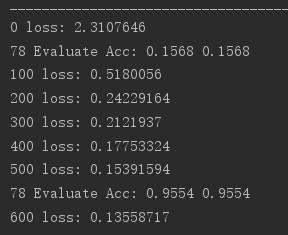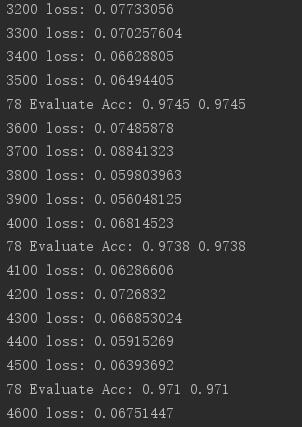Keras高层API之Metrics
Posted 赵代码
tags:
篇首语:本文由小常识网(cha138.com)小编为大家整理,主要介绍了Keras高层API之Metrics相关的知识,希望对你有一定的参考价值。
在tf.keras中,metrics其实就是起到了一个测量表的作用,即测量损失或者模型精度的变化。metrics的使用分为以下四步:
step1:Build a meter
acc_meter = metrics.Accuracy()
loss_meter = metrics.Mean()
step2:Update data
loss_meter.update_state(loss)
acc_meter.update_state(y,pred)
step3:Get Average data
print(step,\'loss:\',loss_meter.result().numpy()) print(step,\'Evaluate Acc:\',total_correct/total,acc_meter.result().numpy())
清除缓存:
if step % 100 == 0: print(step,\'loss:\',loss_meter.result().numpy()) loss_meter.reset_states() if step % 500 ==0: total,total_correct = 0.,0 acc_meter.reset_states()
实战:
import tensorflow as tf from tensorflow.keras import datasets, layers, optimizers, Sequential, metrics def preprocess(x, y): x = tf.cast(x, dtype=tf.float32) / 255. y = tf.cast(y, dtype=tf.int32) return x,y batchsz = 128 (x, y), (x_val, y_val) = datasets.mnist.load_data() print(\'datasets:\', x.shape, y.shape, x.min(), x.max()) db = tf.data.Dataset.from_tensor_slices((x,y)) db = db.map(preprocess).shuffle(60000).batch(batchsz).repeat(10) ds_val = tf.data.Dataset.from_tensor_slices((x_val, y_val)) ds_val = ds_val.map(preprocess).batch(batchsz) network = Sequential([layers.Dense(256, activation=\'relu\'), layers.Dense(128, activation=\'relu\'), layers.Dense(64, activation=\'relu\'), layers.Dense(32, activation=\'relu\'), layers.Dense(10)]) network.build(input_shape=(None, 28*28)) network.summary() optimizer = optimizers.Adam(lr=0.01) acc_meter = metrics.Accuracy() loss_meter = metrics.Mean() for step, (x,y) in enumerate(db): with tf.GradientTape() as tape: # [b, 28, 28] => [b, 784] x = tf.reshape(x, (-1, 28*28)) # [b, 784] => [b, 10] out = network(x) # [b] => [b, 10] y_onehot = tf.one_hot(y, depth=10) # [b] loss = tf.reduce_mean(tf.losses.categorical_crossentropy(y_onehot, out, from_logits=True)) loss_meter.update_state(loss) grads = tape.gradient(loss, network.trainable_variables) optimizer.apply_gradients(zip(grads, network.trainable_variables)) if step % 100 == 0: print(step, \'loss:\', loss_meter.result().numpy()) loss_meter.reset_states() # evaluate if step % 500 == 0: total, total_correct = 0., 0 acc_meter.reset_states() for step, (x, y) in enumerate(ds_val): # [b, 28, 28] => [b, 784] x = tf.reshape(x, (-1, 28*28)) # [b, 784] => [b, 10] out = network(x) # [b, 10] => [b] pred = tf.argmax(out, axis=1) pred = tf.cast(pred, dtype=tf.int32) # bool type correct = tf.equal(pred, y) # bool tensor => int tensor => numpy total_correct += tf.reduce_sum(tf.cast(correct, dtype=tf.int32)).numpy() total += x.shape[0] acc_meter.update_state(y, pred) print(step, \'Evaluate Acc:\', total_correct/total, acc_meter.result().numpy())


以上是关于Keras高层API之Metrics的主要内容,如果未能解决你的问题,请参考以下文章